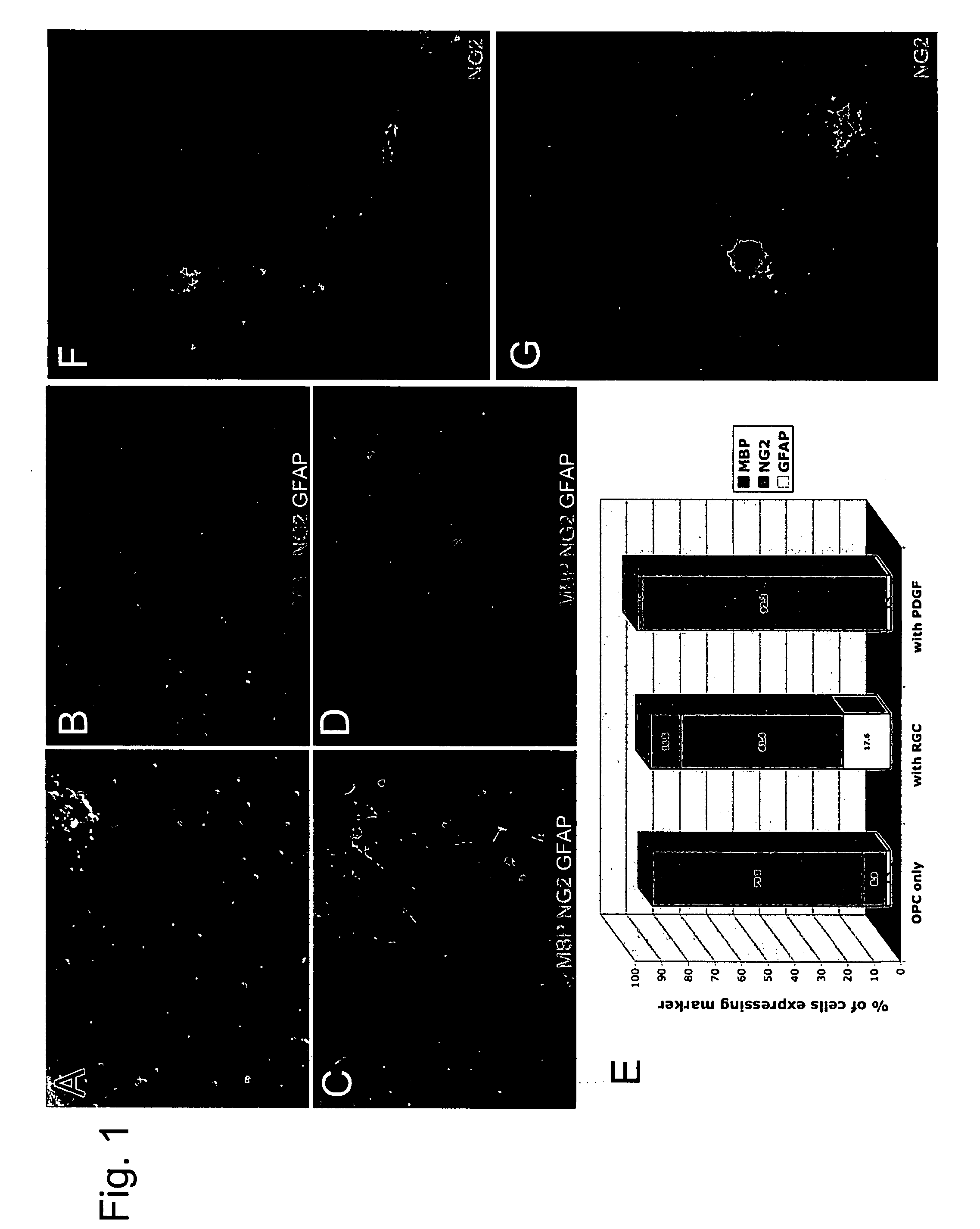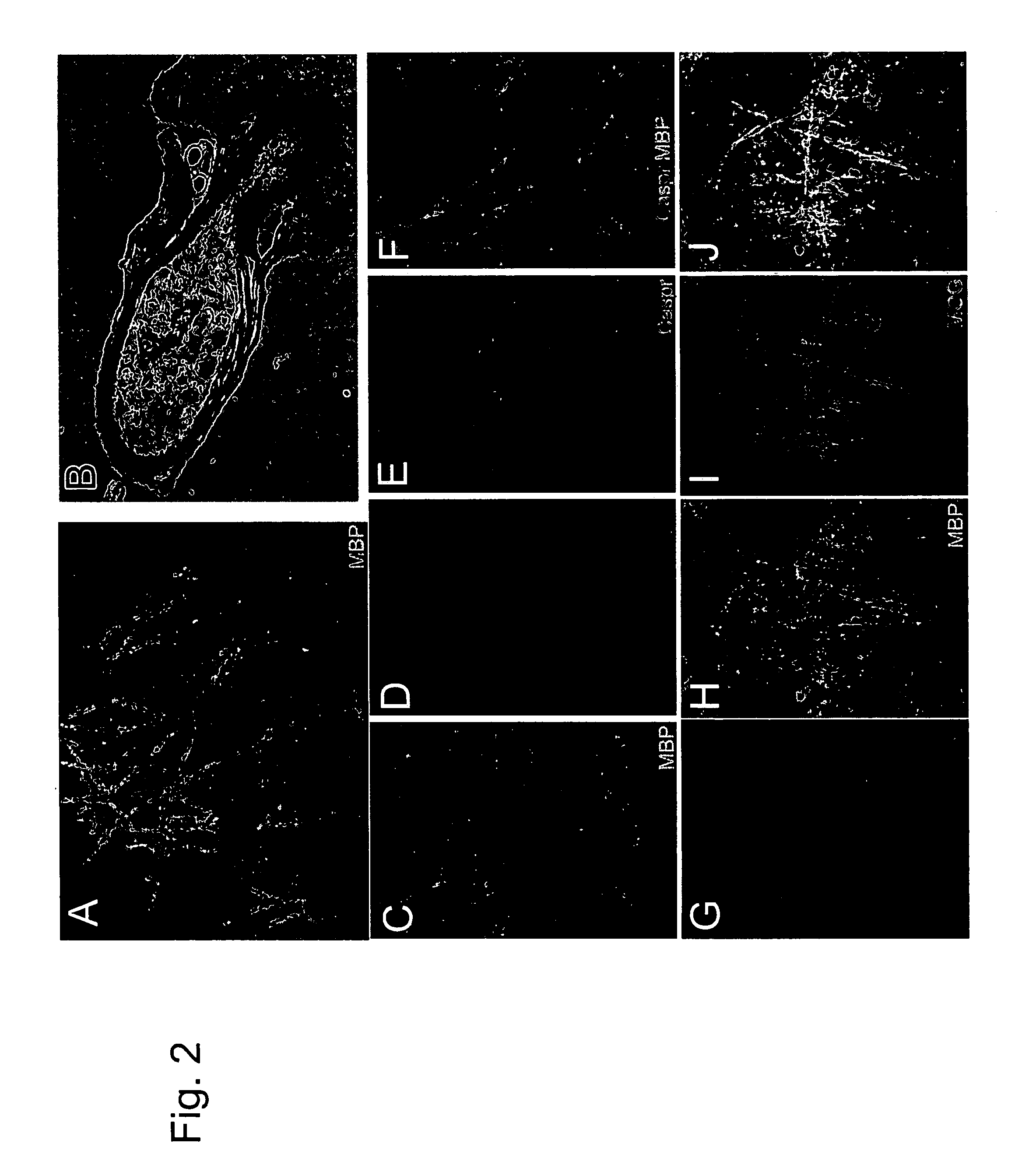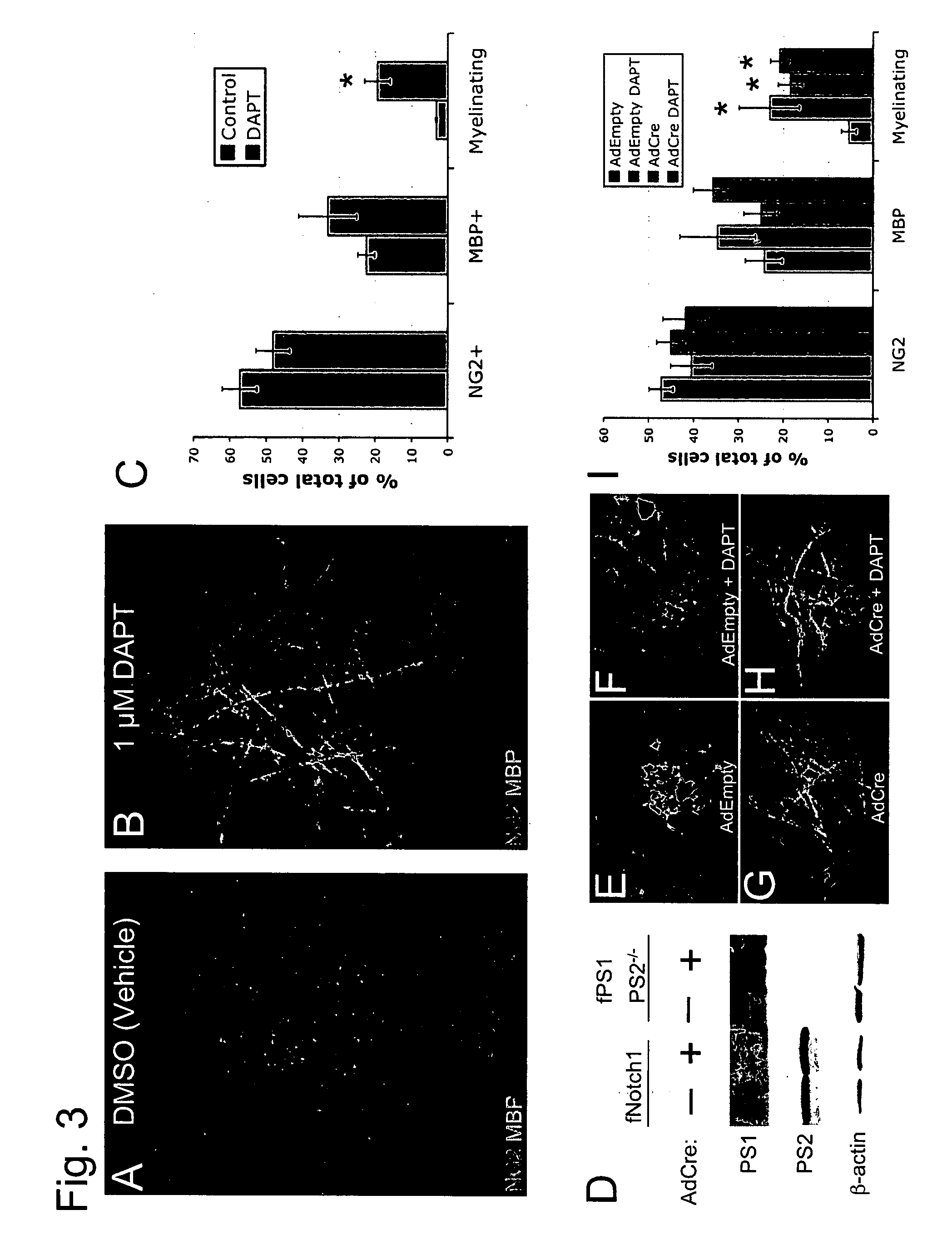Blockade of gamma-secretase activity to promote myelination by oligodendrocytes
a technology of oligodendrocytes and gamma secretase, which is applied in the field of blocking gamma secretase activity to promote myelination by oligodendrocytes, can solve the problems of myelination disorders that can produce significant impairment in sensory, motor and other types of functioning, and neurological disorders with often devastating consequences, so as to enhance myelination, enhance myelination, and enhance myelination
- Summary
- Abstract
- Description
- Claims
- Application Information
AI Technical Summary
Benefits of technology
Problems solved by technology
Method used
Image
Examples
example 1
γ-Secretase Activity in CNS Myelination
[0107] In order to observe myelination by time lapse microscopy, we first developed a rapidly myelinating CNS co-culture system. We took advantage of established protocols to purify and culture rat retinal ganglion cells (RGCs), whose axons form the optic nerve, in the absence of glia. Whereas nearly all CNS neurons require glia for long-term survival in culture, dissociated RGCs can be purified by immunopanning and grown in defined medium for weeks, during which time they extend extensive networks of axons and dendrites on a laminin substrate. These networks, however, may not be suitable for the analysis of interactions of axon bundles with glia in developing CNS tracts.
[0108] We therefore adapted these protocols to produce cultures in which isolated oligodendrocyte precursor cells. (OPCs) can interact specifically with multiple CNS axons. Purified RGCs were allowed to reaggregate into clumps of tens to hundreds of neurons prior to plating o...
example 2
Genetic Inhibition of γ-Secretase
[0131] Active γ-secretase is a complex of four proteins, of which presenilin (PS) is thought to provide the active site. A knockdown of presenilin-1 and presenilin-2 expression in OPCs is shown to have the same effect on myelination as DAPT. These data demonstrate that DAPT is acting through gamma-secretase; and that the relevant activity is in oligodendrocytes.
[0132] OPCs were transfected with either 1.5 μg siCONTROL (i.e., non-targeting siRNA) or 1.0 μg siRNA targeting PS1 and 0.5 μg siRNA targeting PS2. These constructs target expression of a protein required for g-secretase activity. Because our gene chip studies demonstrate that both RGCs and OPCs (and OLs) express both PS-1 and PS-2, siRNAs were chosen to inhibit the activity of both presenilins.
[0133] Transfected OPCs were plated immediately on ten-day-old cultures of RGC reaggregates, and in some cases in the presence or absence of 1 μM DAPT. Myelination was examined after six days by MBP ...
example 3
[0135] The effect of blocking γ-secretase activity in vivo is examined. DAPT (100 mg / kg s.c.) is administered daily to perinatal rats. Myelination is examined at P6, a time point at which only a very small number of OLs and myelin segments in control rats (injected with vehicle alone) are observed. Specifically, pairs of optic nerves from these rats are cryosectioned and immunostained for CC1 and MBP to determine if there are differences in the numbers of mature oligodendrocytes or myelin segments. Indications of changes in myelination are followed by Western blots and immunostaining for α-neurofilament, to ensure that the numbers and morphologies of axons are unaffected.
PUM
| Property | Measurement | Unit |
|---|---|---|
| time | aaaaa | aaaaa |
| time | aaaaa | aaaaa |
| time | aaaaa | aaaaa |
Abstract
Description
Claims
Application Information
 Login to View More
Login to View More - R&D
- Intellectual Property
- Life Sciences
- Materials
- Tech Scout
- Unparalleled Data Quality
- Higher Quality Content
- 60% Fewer Hallucinations
Browse by: Latest US Patents, China's latest patents, Technical Efficacy Thesaurus, Application Domain, Technology Topic, Popular Technical Reports.
© 2025 PatSnap. All rights reserved.Legal|Privacy policy|Modern Slavery Act Transparency Statement|Sitemap|About US| Contact US: help@patsnap.com



